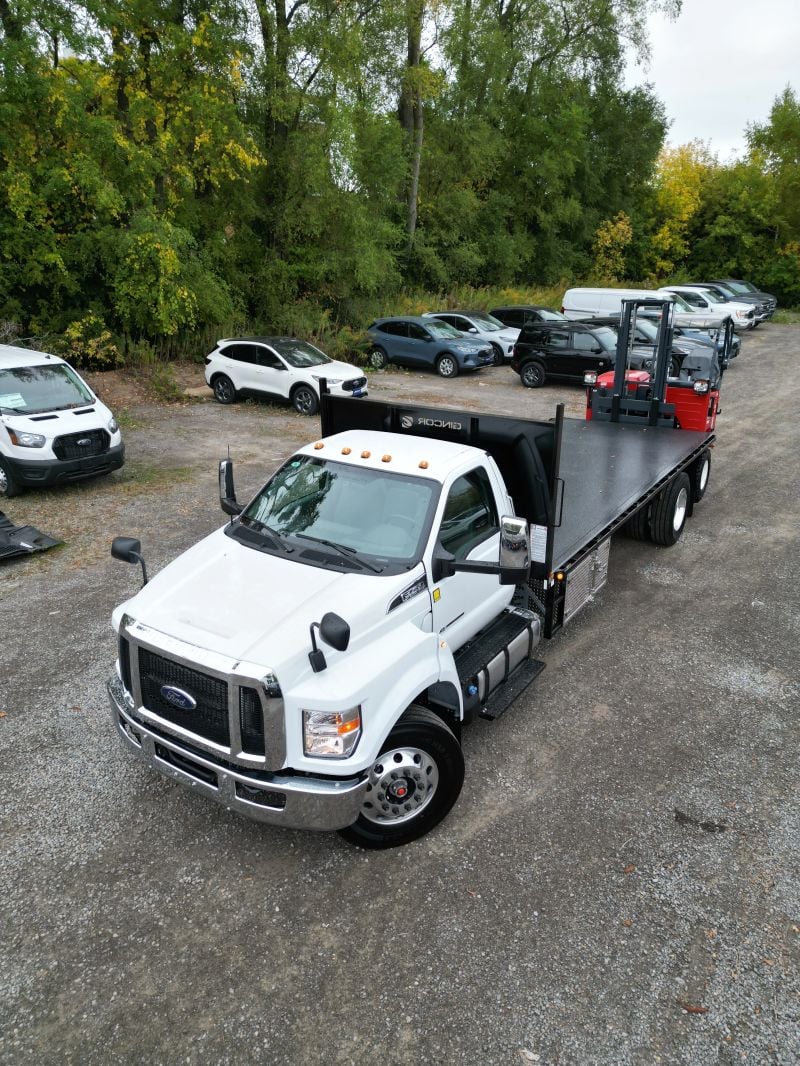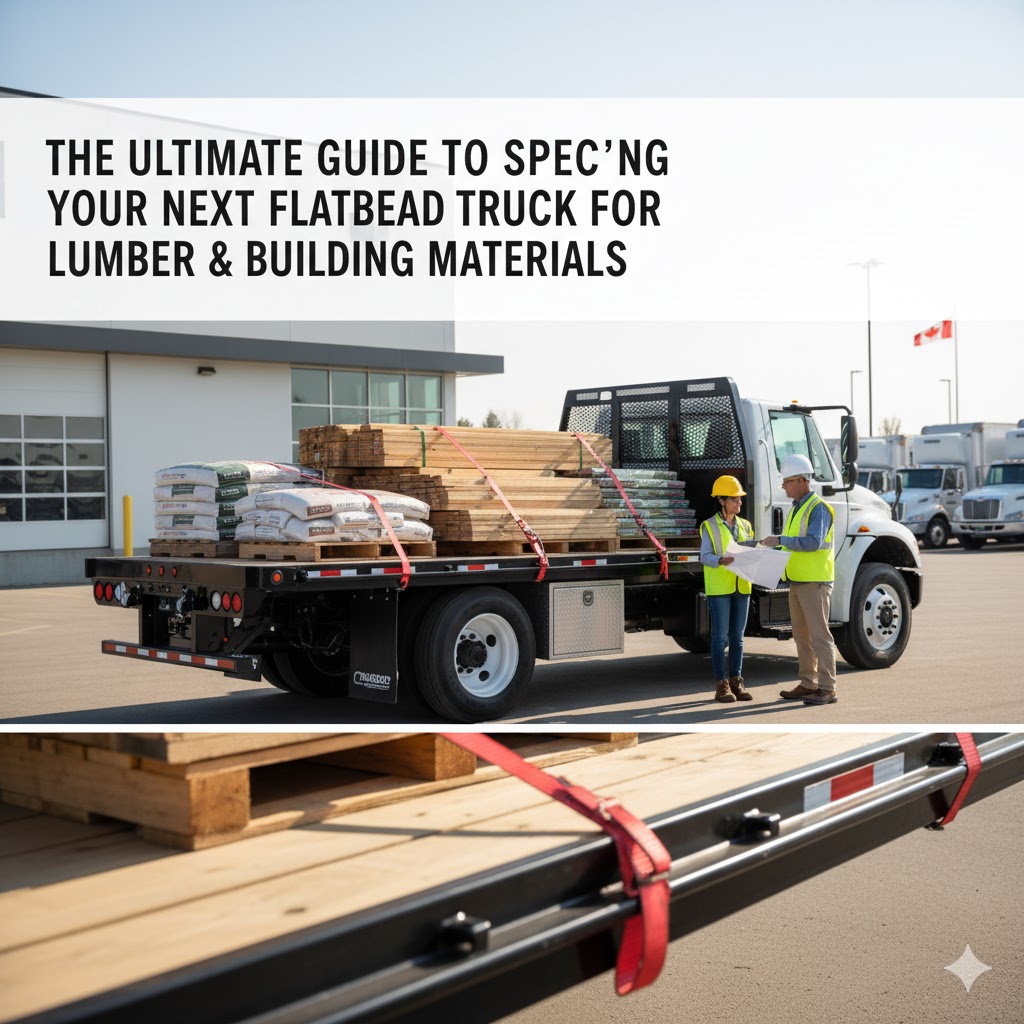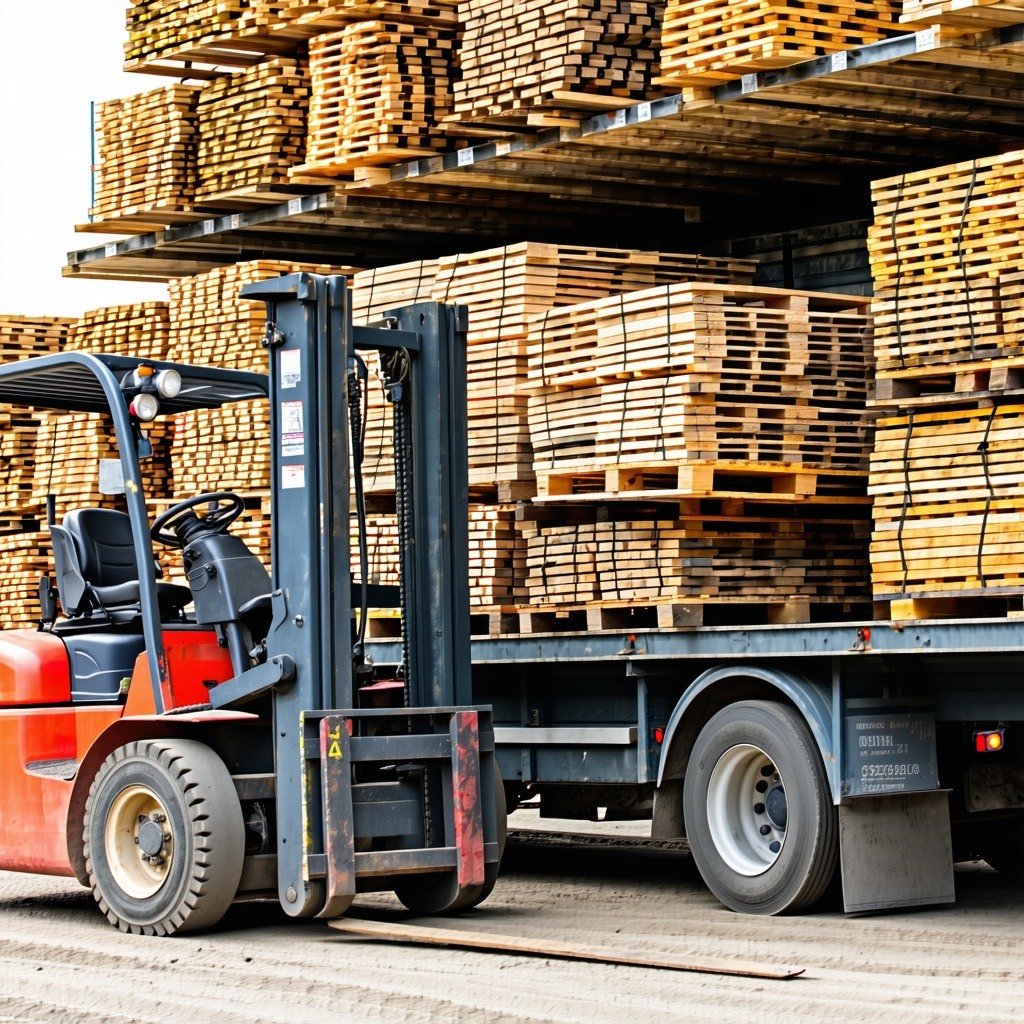Moffett vs. Truck-Mounted Forklift: Which Is Right for Your Yard?
If you’re running a Home Hardware, Castle, or Timber Mart yard, you’ve probably had this debate more than once: should you run Moffetts, or go heavier with truck-mounted forklifts like Princeton or Manitou?
It’s not just a matter of preference or brand loyalty. The choice directly affects your delivery efficiency, driver safety, payload, and how many mornings you’ll spend pulling a machine out of a muddy subdivision.
Let’s get into the real-world pros and cons — and finish with a side-by-side spec sheet you can actually use.

Manitou TMT 55 XT Y ST5


1. What a Moffett Really Brings to the Table
A Moffett (often called a “piggyback forklift”) rides on the back of your delivery truck or trailer and detaches within minutes. Once it’s off, it handles lumber, drywall, shingles — basically anything you’d deliver to a builder or job site.
Where it wins:
-
Tight Job Sites: Ideal for infill and downtown deliveries. Narrow frame, great turning radius, and low weight make it perfect for residential streets and tight lots.
-
Speed: A trained operator can unload in two minutes flat. No waiting for site equipment or extra help.
-
Versatility: Handles everything from siding to trusses with optional pantograph reach.
Where it struggles:
-
Soft Ground: Limited ground clearance means mud, gravel, or new subdivisions can be a problem.
-
Payload Loss: You’ll lose around 2,500–3,000 lbs of truck payload to the mounting kit and machine weight.
-
Upfront Cost: Expect around $45K–$55K CAD for a new setup with mounting hardware.
Still, for fast, multi-stop delivery routes, Moffetts are hard to beat.
2. Truck-Mounted Forklifts: Built for the Rough Stuff
Truck-mounted rough-terrain forklifts like Princeton PB55+ or Manitou TMT 55 XT are beefier. They’re designed for heavy materials and job sites that look more like a gravel pit than a cul-de-sac.
Where they win:
-
All-Terrain Performance: They can handle ruts, mud, and uneven ground.
-
Heavier Lifts: 5,500–7,000 lbs lift capacity means you can move bulk stone, masonry, or landscaping pallets with ease.
-
Durability: Built to take abuse. These units often outlast Moffetts in rough-use environments.
Where they struggle:
-
Weight: Heavier units mean more payload loss and less fuel efficiency.
-
Size: They’re not ideal for tight urban work — turning and clearance are limited.
-
Service Costs: Heavier systems and more complex hydraulics mean higher maintenance bills over time.
If your deliveries are mostly rural or heavy construction, a truck-mounted unit is a smarter long-term play.
3. Real-World Use Cases
Let’s be honest — every yard is different. Here’s how it breaks down across Canada:
-
Downtown Toronto or Calgary: Moffett wins. You’ll save time, and drivers won’t have to fight for space.
-
Sudbury, North Bay, or Prince George: Go truck-mounted. High ground clearance pays off the first time you drop block on a muddy lot.
-
Mixed Operations: Many yards run both — Moffetts for quick, local drops; truck-mounted units for bulk or rough deliveries.
-
Seasonal Deliveries: Moffetts tend to run better year-round since they handle snow and ice with fewer issues than people think, as long as you’re not in deep mud.
4. Spec Sheet: Typical Models We See
Here’s a side-by-side look at the real specs you’ll be comparing when you spec your next delivery truck.
| Category | Moffett M8 55.3 (Piggyback Forklift) | Princeton PB55+ (Rough Terrain) | Manitou TMT 55 XT (Rough Terrain) |
|---|---|---|---|
| Lift Capacity | 5,500 lbs @ 24" | 5,500 lbs @ 24" | 5,500 lbs @ 24" |
| Engine | Kubota 3-cyl diesel (56 HP) | Deutz 4-cyl diesel (56 HP) | Kubota 4-cyl diesel (56 HP) |
| Operating Weight | ~5,700 lbs | ~6,700 lbs | ~6,900 lbs |
| Payload Impact on Truck | ~2,700 lbs | ~3,200 lbs | ~3,200 lbs |
| Lift Height | 12 ft | 12 ft | 12 ft |
| Reach (Pantograph) | 67" | 62" | 59" |
| Ground Clearance | 10" | 12" | 13" |
| Drive Type | All-wheel hydrostatic | All-wheel hydrostatic | All-wheel hydrostatic |
| Turning Radius | 100" | 120" | 125" |
| Travel Speed | 7 mph | 7 mph | 7.5 mph |
| Detach Time | 1.5–2 minutes | 2.5–3 minutes | 2.5–3 minutes |
| Mounting Clearance Needed | 60"–66" | 80"–84" | 80"–84" |
| Ideal Applications | Lumber, drywall, siding | Block, landscaping, masonry | Heavy materials, rural deliveries |
| Approx. Cost (CAD) | $48K–$55K | $58K–$68K | $62K–$75K |
| Dealer Support (Canada) | Excellent | Moderate | Moderate |
| Resale Value (5 yrs) | 60–70% | 50–60% | 55–65% |
5. Cost and ROI: Where the Dollars Land
A well-maintained Moffett typically holds 60–70% of its value after five years, making it easier to upgrade when you replace your trucks.
Truck-mounted units depreciate slower but are harder to sell — there’s less secondary market demand outside of bulk delivery fleets.
Maintenance averages (annual):
-
Moffett: $1,500–$2,500
-
Truck-Mounted: $2,500–$3,500
The difference doesn’t sound big until you multiply it by three or four units over a decade.
6. The Operator Factor
Don’t underestimate this one. Moffetts are faster to learn — most drivers are comfortable after one or two days. Truck-mounted forklifts take a little more finesse, and some operators simply prefer one type over the other.
If you’ve got seasonal turnover or newer drivers, the Moffett is a safer bet operationally.
7. Safety, Insurance, and Compliance
Both systems are considered truck-mounted material handling equipment under Canadian CVOR regulations, but insurance can differ slightly:
-
Moffetts are lighter and often cheaper to insure.
-
Heavier truck-mounted forklifts can bump premiums a few percentage points if they’re used off-road regularly.
Always double-check with your insurer before ordering — those small differences can eat into your ROI.
Bottom Line
-
Urban/Suburban Routes: Moffett wins for speed, maneuverability, and resale.
-
Rural/Heavy Construction: Truck-mounted forklifts win for traction, lift capacity, and durability.
-
Mixed Fleet: Many Canadian yards run both, matched to route type — that’s the real efficiency play.
Final Word
Before you spec your next truck, take 10 minutes and look back at your last 50 deliveries.
-
How many were downtown or in tight residential areas?
-
How many were rural or new-construction sites?
That’ll tell you which machine really makes sense for your operation.
And if you’re not sure, give me a call — I’ve helped a lot of yards across Canada pick the right setup, and a quick chat about your routes can save you thousands before you sign off on the next build.



